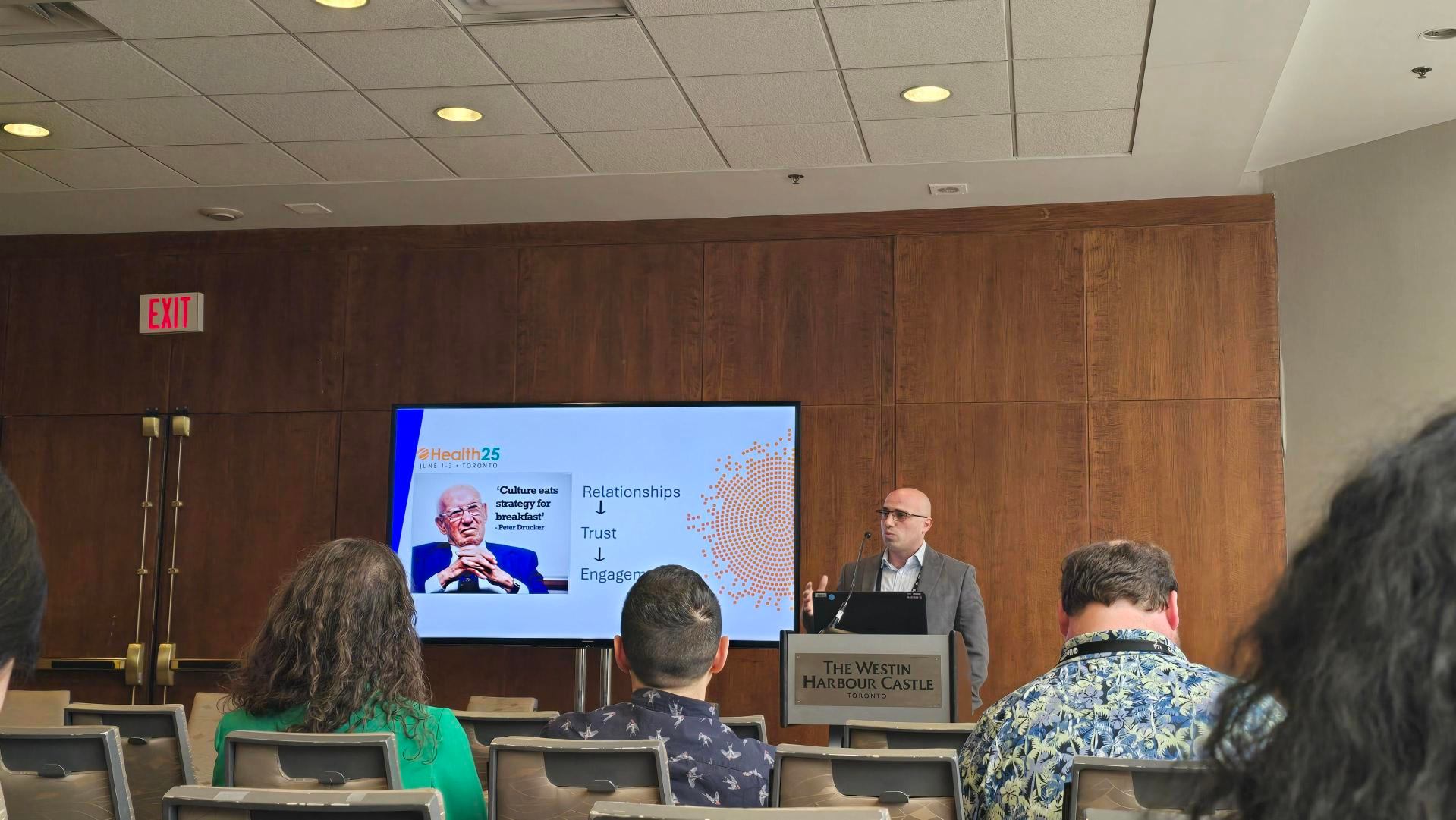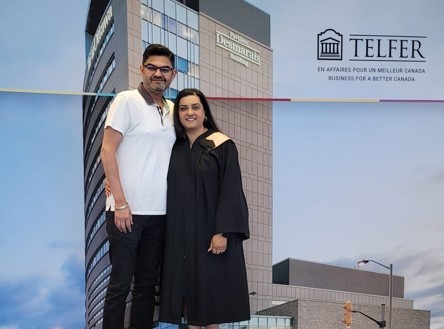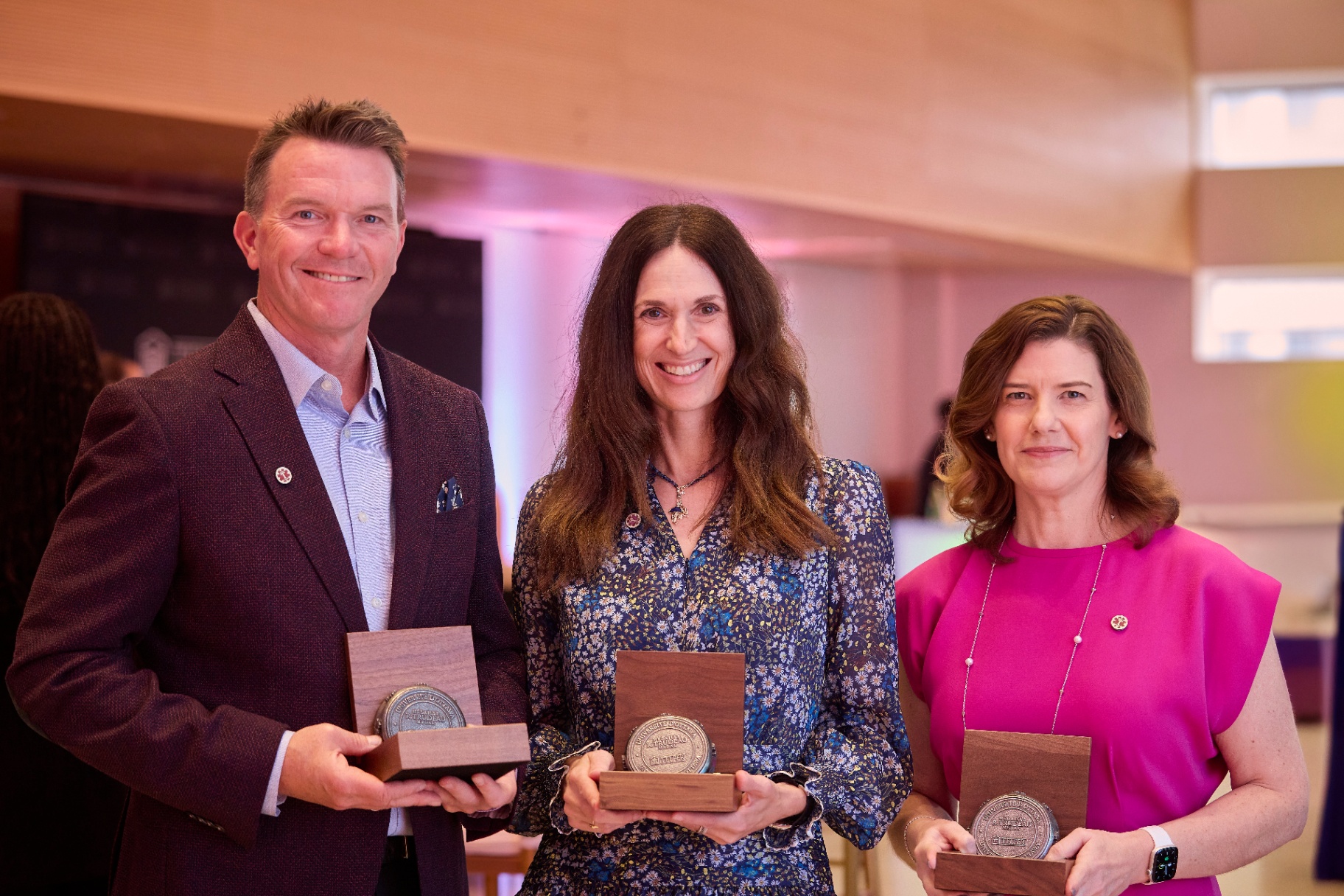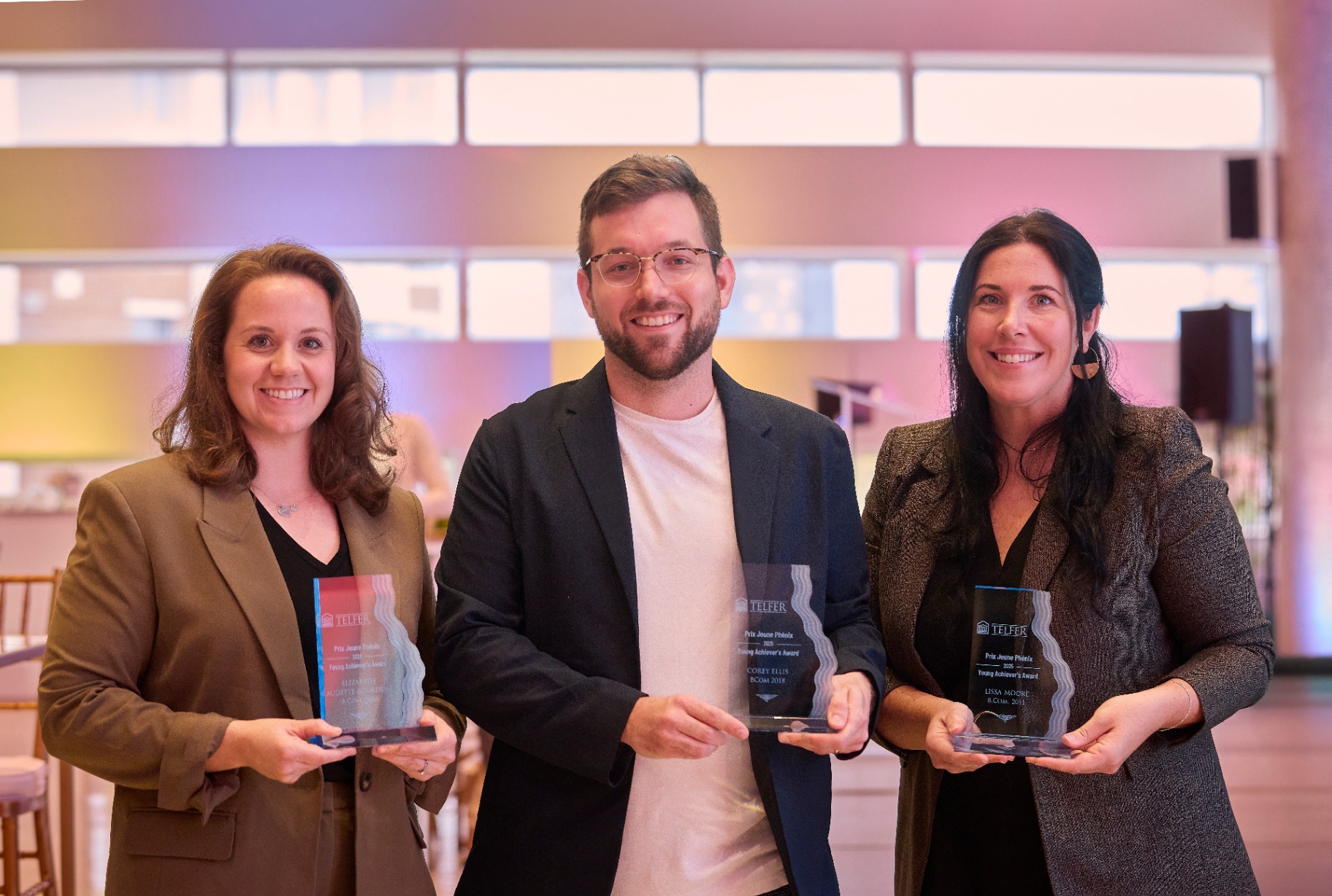A clinician’s path to systemic impact
When Dr. Ala Qahwash first entered the health-care field, it wasn’t through the traditional clinical doorway. His early work involved outpatient rehabilitation, hospital contracting and home care, activities where prevention and continuity were more than buzzwords. “I saw first hand how care outside the hospital could transform lives,” he says.
Today, Qahwash is director of regional cardiac and critical care programs at Waterloo Regional Health Network (formerly St. Mary’s), where his portfolio includes in-patient cardiology, ICU operations and cardiac rehabilitation. “We don’t just need more hospital beds — we need to prevent people from needing them,” he says. “Last winter, our region avoided a surge in cardiac ER admissions due to expanded outreach and proactive care, a direct result of upstream prevention.”
Qahwash’s vision was sharpened through the Executive Master of Health Administration (EMHA) at the Telfer School of Management. “The EMHA bridged the gap between what I was doing on the ground and the kind of system-wide change I wanted to lead.” The program equipped him with critical tools in strategic planning, health economics and population health management, skills that influence his decision making today.
Cardiology as a path to prevention and equity
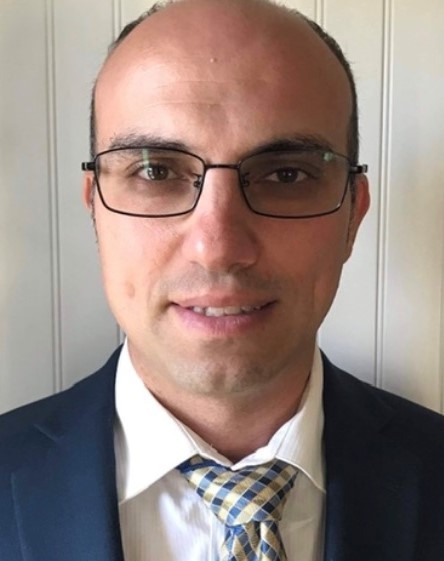
Qahwash saw early on that heart health is deeply tied to broader health equity. “Cardiac care touches everything — lifestyle, chronic disease, social determinants.” His roots in physical therapy taught him that addressing modifiable risks like smoking and inactivity could be as important as clinical interventions.
Programs like Waterloo’s PREVENT Clinic demonstrate that ethos in action. The initiative focuses on early detection, risk management and tailored support, especially for marginalized communities. One patient, a 45-year-old woman struggling with multiple health issues, found hope and structure through it. “She didn’t just learn what to do — she believed she could do it,” Qahwash says. “Within six months, the patient had quit smoking, brought her blood sugar under control and lost over 20 pounds. That belief led to transformation.”
The PREVENT model is also generating compelling data. Preliminary metrics show a 30% reduction in repeat emergency visits among enrolled patients and higher adherence to prescribed cardiac rehabilitation plans. These results underscore the potential of preventive cardiology and early intervention in reducing the burden on Ontario’s health-care system.
Taking on leadership
Qahwash’s role spans much more than clinical oversight. It includes strategy, system integration, workforce development and fiscal accountability. “I see leadership as transformational. It’s about aligning people around purpose,” he says.
Barriers to cardiac rehab, like access, language and cultural fit, are real. His response: integrated EMR referrals, virtual rehab and cross-sector partnerships. “We don’t build solutions in isolation,” he says. These co-ordinated efforts are designed to improve health-care access and ensure that no one falls through the cracks after discharge.
Qahwash has also introduced new models for cross-regional collaboration. “By creating shared protocols between hospitals and community providers, we reduce duplication and streamline care pathways. That’s how we scale quality.” His work reflects the larger shift toward collaborative health-care systems in Canada, in which leadership, data and technology intersect.
The EMHA catalyst
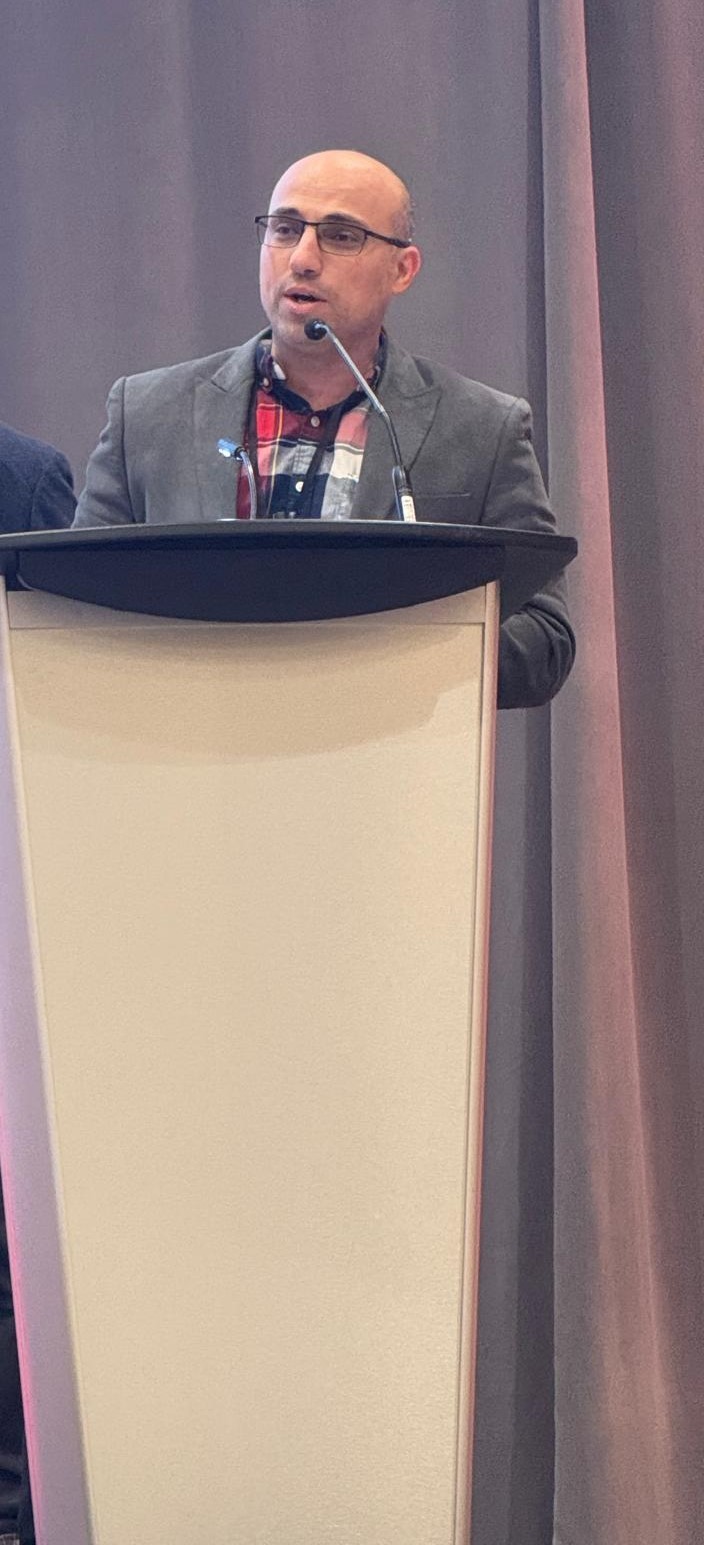
By the time he entered Telfer’s Executive MHA program, Qahwash was already a respected leader. But the program added strategy to instinct. “Suddenly, I wasn’t just advocating, I could build the case with data, models and alignment.”
The EMHA coursework covered everything from health informatics and organizational behaviour to fiscal accountability and public health policy. These were not abstract lessons. “I applied what I learned in real time. Whether it was budget strategy, stakeholder engagement and even new communication frameworks with staff.”
The peer network was equally powerful. “It wasn’t theoretical. Everyone had lived experience, and we learned as much from each other as from the coursework.”
One systems design course hit home. “I was mapping care journeys in class and realized, This is what I do every day. Now I had a toolkit.” That toolkit helped Qahwash spearhead new quality improvement initiatives across WRHN’s critical care programs.
PREVENT and community-based care
The PREVENT Clinic, launched with Manulife and local partners, exemplifies proactive cardiac care. Screening for diabetes, hypertension and cholesterol is combined with culturally-relevant education, medication support and smoking cessation programs.
“We go where the patients are,” says Qahwash. “Sometimes that means a religious or community centre, or a segment on local radio.” The clinic is supported by both public health funds and private grants, with scalability in mind.
Outcomes include fewer ER visits, improved chronic disease control and stronger engagement from vulnerable populations. “It’s not just a program — it’s a prototype for community-first cardiology,” Qahwash says.
This population health approach aligns with Ontario Health’s strategic direction: focusing on outcomes, equity and cost-effective care. Preventative cardiac care is no longer a fringe idea — it’s a central pillar in future-ready health-care delivery models.
Tech, equity and the future of heart health
Technology, Qahwash believes, must be co-designed. “We bring engineers into hospitals to observe real workflows. That’s how you build solutions that work.”
Wearables, virtual platforms and predictive analytics are already shifting care from reactive to proactive. But success hinges on equity. “Our region is diverse,” says Qahwash. “If your tech isn’t mobile-friendly, multilingual, accessible and culturally attuned, it won’t reach (the people) it needs to.”
Qahwash recalls a patient in a rural area who was monitored remotely for blood pressure fluctuations. The alert system flagged an abnormal pattern before symptoms developed. He was seen the next day, avoiding hospitalization.
Beyond patient care, digital integration supports better health system planning. “We use predictive analytics to optimize staffing, reduce overtime and plan for seasonal surges. The ripple effect on staff well-being and patient outcomes is real.”
Advice to emerging leaders
Dr.Qahwash, closes with this : “Find your rock…and keep tapping.” A metaphor shared by a former CEO, it reflects his belief that leadership is about persistence, not perfection.
“Healthcare leadership isn’t about titles. It’s about impact. Stay curious, be patient and build systems that work for everyone.”
He adds: “Once, I failed to get buy-in for a care redesign I was passionate about. Months later, after revising and retrying, the same idea was adopted region wide. That taught me. Timing and persistence matter.”
To those considering the Telfer EMHA program, his message is simple: “If you’re serious about transforming health care, the EMHA will give you the mindset, tools and network to lead.”
Ready to lead health-care transformation?
Equip yourself to drive real change. Explore the Telfer Executive MHA or email our admissions team at
